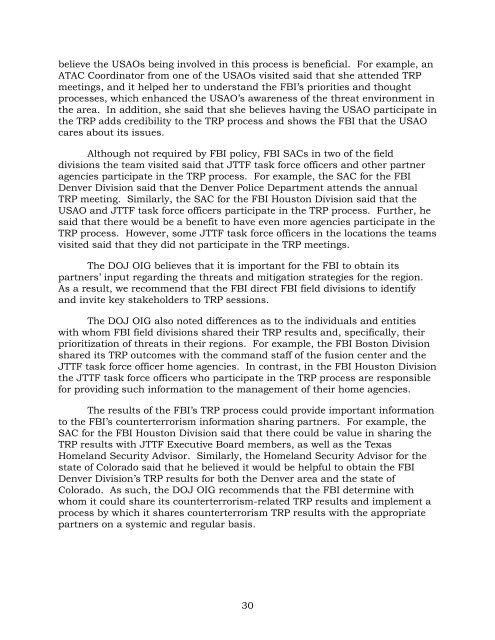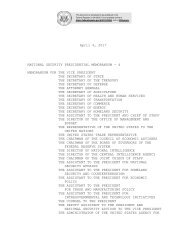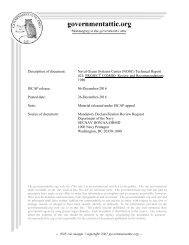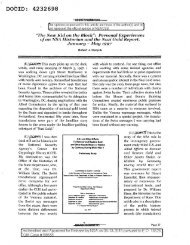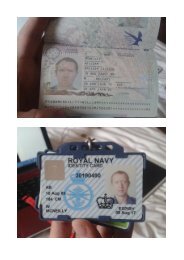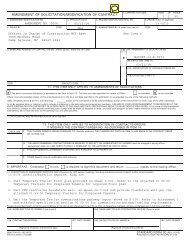Review of Domestic Sharing of Counterterrorism Information
Domestic_Sharing_Counterterrorism_Information_Report
Domestic_Sharing_Counterterrorism_Information_Report
Create successful ePaper yourself
Turn your PDF publications into a flip-book with our unique Google optimized e-Paper software.
elieve the USAOs being involved in this process is beneficial. For example, an<br />
ATAC Coordinator from one <strong>of</strong> the USAOs visited said that she attended TRP<br />
meetings, and it helped her to understand the FBI’s priorities and thought<br />
processes, which enhanced the USAO’s awareness <strong>of</strong> the threat environment in<br />
the area. In addition, she said that she believes having the USAO participate in<br />
the TRP adds credibility to the TRP process and shows the FBI that the USAO<br />
cares about its issues.<br />
Although not required by FBI policy, FBI SACs in two <strong>of</strong> the field<br />
divisions the team visited said that JTTF task force <strong>of</strong>ficers and other partner<br />
agencies participate in the TRP process. For example, the SAC for the FBI<br />
Denver Division said that the Denver Police Department attends the annual<br />
TRP meeting. Similarly, the SAC for the FBI Houston Division said that the<br />
USAO and JTTF task force <strong>of</strong>ficers participate in the TRP process. Further, he<br />
said that there would be a benefit to have even more agencies participate in the<br />
TRP process. However, some JTTF task force <strong>of</strong>ficers in the locations the teams<br />
visited said that they did not participate in the TRP meetings.<br />
The DOJ OIG believes that it is important for the FBI to obtain its<br />
partners’ input regarding the threats and mitigation strategies for the region.<br />
As a result, we recommend that the FBI direct FBI field divisions to identify<br />
and invite key stakeholders to TRP sessions.<br />
The DOJ OIG also noted differences as to the individuals and entities<br />
with whom FBI field divisions shared their TRP results and, specifically, their<br />
prioritization <strong>of</strong> threats in their regions. For example, the FBI Boston Division<br />
shared its TRP outcomes with the command staff <strong>of</strong> the fusion center and the<br />
JTTF task force <strong>of</strong>ficer home agencies. In contrast, in the FBI Houston Division<br />
the JTTF task force <strong>of</strong>ficers who participate in the TRP process are responsible<br />
for providing such information to the management <strong>of</strong> their home agencies.<br />
The results <strong>of</strong> the FBI’s TRP process could provide important information<br />
to the FBI’s counterterrorism information sharing partners. For example, the<br />
SAC for the FBI Houston Division said that there could be value in sharing the<br />
TRP results with JTTF Executive Board members, as well as the Texas<br />
Homeland Security Advisor. Similarly, the Homeland Security Advisor for the<br />
state <strong>of</strong> Colorado said that he believed it would be helpful to obtain the FBI<br />
Denver Division’s TRP results for both the Denver area and the state <strong>of</strong><br />
Colorado. As such, the DOJ OIG recommends that the FBI determine with<br />
whom it could share its counterterrorism-related TRP results and implement a<br />
process by which it shares counterterrorism TRP results with the appropriate<br />
partners on a systemic and regular basis.<br />
30


